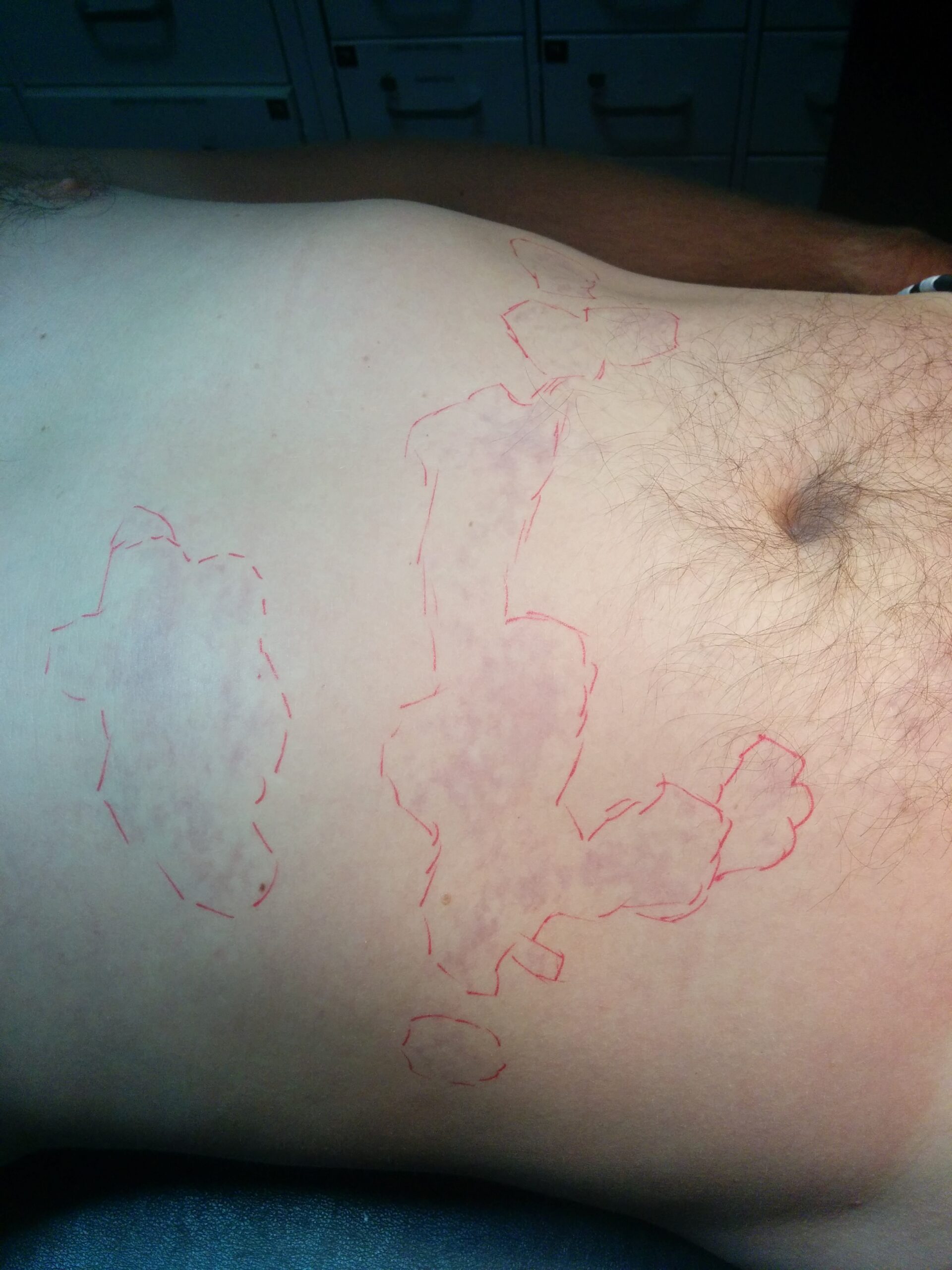CMTC: Symptoms, Causes, Treatment
What are the symptoms of CMTC?
Cutis marmorata telangiectatica congenita (CMTC) is a rare vascular condition that is present at birth. It is characterized by skin abnormalities and blood vessel malformations. The symptoms of CMTC can vary widely among affected individuals, but common symptoms may include:
- Skin abnormalities: The most common symptom of CMTC is a marbled or mottled appearance of the skin, which is caused by dilated blood vessels under the skin. This marbling pattern may be more pronounced in response to cold temperatures.
- Telangiectasias: Telangiectasias are small, dilated blood vessels near the surface of the skin that may appear as red or purple clusters or lines.
- Asymmetry: The skin abnormalities and blood vessel malformations in CMTC may be asymmetrical, affecting one side of the body more than the other.
- Limb abnormalities: In some cases, CMTC may be associated with abnormalities of the limbs, such as asymmetry, limb length differences, or joint contractures.
- Other skin findings: Other skin findings that may be present in CMTC include atrophy (thinning of the skin), ulceration (breakdown of the skin), and subcutaneous fat loss.
- Complications: In some cases, CMTC may be associated with complications such as limb overgrowth, scoliosis (curvature of the spine), or developmental delay.
It’s important to note that the symptoms of CMTC can vary widely among affected individuals, and not all people with CMTC will experience all of these symptoms. The severity of symptoms can also vary, with some people having mild symptoms that do not require treatment, while others may have more severe symptoms that require medical intervention. If you or your child has symptoms of CMTC, it’s important to see a healthcare provider for a proper diagnosis and management plan.
What are the causes of CMTC?
The exact cause of cutis marmorata telangiectatica congenita (CMTC) is not well understood. It is thought to be a multifactorial condition, which means that it is likely caused by a combination of genetic and environmental factors. Some researchers believe that CMTC may be caused by abnormalities in the development of the blood vessels in the skin, which can lead to the characteristic skin abnormalities and blood vessel malformations seen in the condition.
There is some evidence to suggest that CMTC may be associated with chromosomal abnormalities, such as trisomy 18 or trisomy 21, but these abnormalities are not present in all cases of CMTC. Other factors that may contribute to the development of CMTC include maternal illness or exposure to certain medications or toxins during pregnancy, but more research is needed to fully understand the causes of this condition.
Overall, CMTC is a rare condition, and more research is needed to determine the underlying causes and risk factors. If you or your child has been diagnosed with CMTC, it’s important to work closely with a healthcare provider to develop a management plan that addresses the specific symptoms and needs of the individual.
What is the treatment for CMTC?
Treatment for cutis marmorata telangiectatica congenita (CMTC) is typically focused on managing symptoms and complications, as there is no specific cure for the condition. The goal of treatment is to improve the appearance of the skin, address any associated complications, and support the overall health and well-being of the individual. Treatment options for CMTC may include:
- Observation: In many cases, CMTC does not cause any health problems beyond the appearance of the skin. In these cases, no treatment may be necessary, and the condition may be monitored over time.
- Skin care: Gentle skin care practices, such as using mild cleansers and moisturizers, can help keep the skin healthy and reduce the risk of complications such as dryness or irritation.
- Compression garments: Wearing compression garments or bandages may help improve the appearance of the skin and reduce the visibility of blood vessels.
- Physical therapy: Physical therapy may be recommended to help improve mobility and joint function, especially in cases where CMTC is associated with limb abnormalities.
- Surgical interventions: In some cases, surgical interventions may be considered to address specific complications of CMTC, such as limb overgrowth or joint contractures.
- Monitoring for complications: People with CMTC may be monitored for complications such as scoliosis (curvature of the spine), developmental delays, or other associated conditions.
It’s important for individuals with CMTC to work closely with a healthcare provider to develop a treatment plan that is tailored to their specific symptoms and needs. Regular follow-up appointments may be recommended to monitor the condition and address any changes or new symptoms that may arise.




